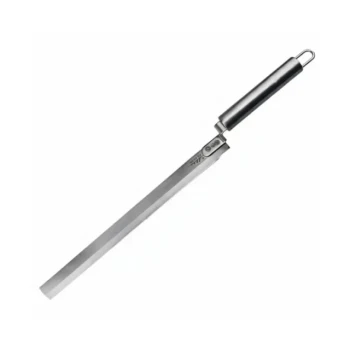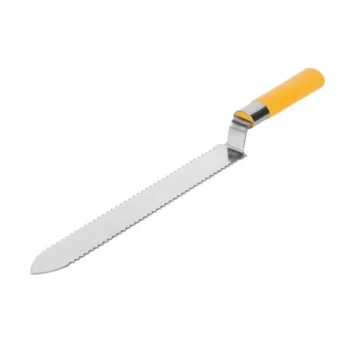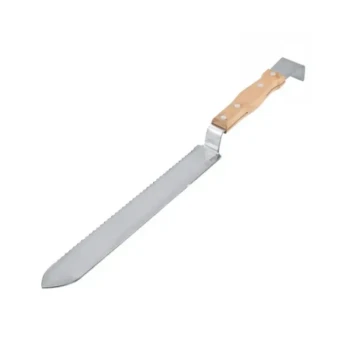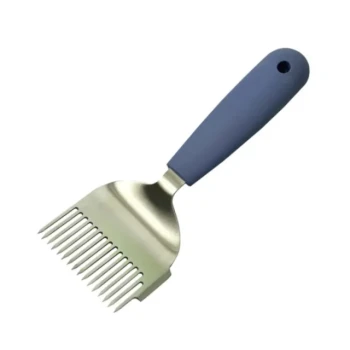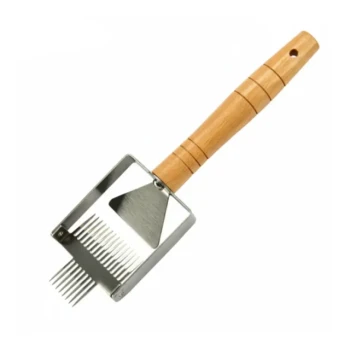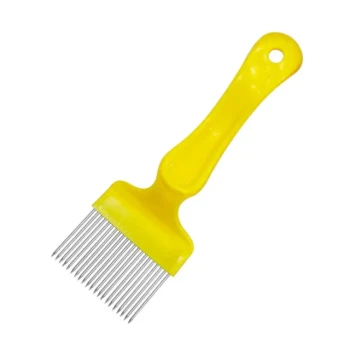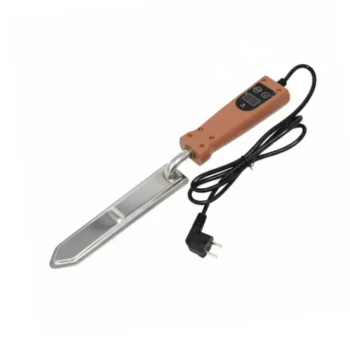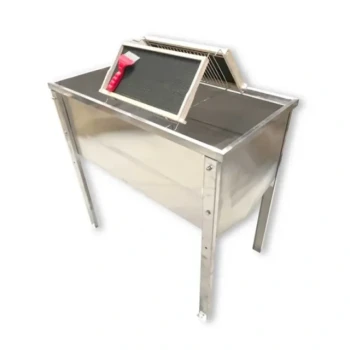An uncapping knife is a specialized tool used in beekeeping to slice off the thin layer of beeswax, known as "cappings," that honeybees create to seal their honey-filled comb. This step is a necessary prerequisite for placing the frames in a honey extractor.
The core purpose of an uncapping knife is not just to cut, but to create a clean, smooth opening to the honey cells while minimizing damage to the underlying comb structure, making the honey extraction process efficient and clean.
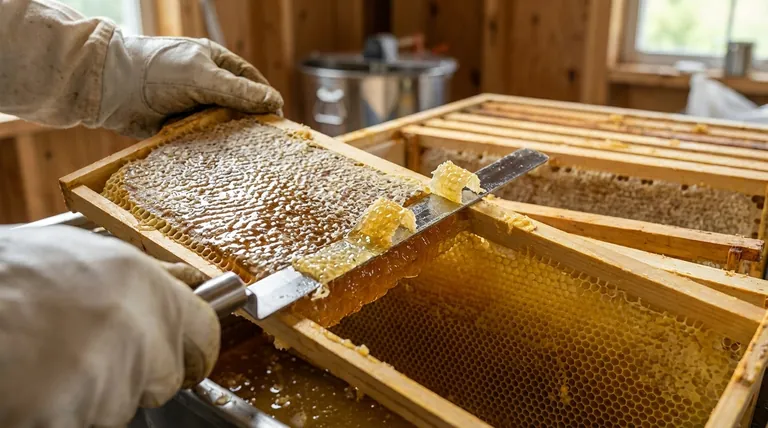
The Role of Uncapping in Honey Extraction
Before honey can be harvested, the protective wax seal placed on each cell by the bees must be removed. This is where the uncapping knife is essential.
Why Bees Cap Their Honey
Honeybees seal completed cells of honey with a fresh layer of beeswax. This capping preserves the honey, protecting it from moisture and contaminants until the bees need it.
The Goal of a Clean Cut
The objective is to remove only this thin wax cap. A clean cut leaves the hexagonal comb structure intact, allowing the bees to repair and refill the cells quickly, saving them immense time and energy.
How to Use an Uncapping Knife Effectively
Proper technique ensures an efficient harvest and preserves the quality of both the honey and the comb.
The Heated Knife Method
For best results, the knife is typically heated in very hot water. A hot blade melts through the wax cappings rather than just tearing them.
This melting action results in a much smoother and easier cut, requiring less physical force and reducing the risk of damaging the honeycomb.
The Importance of a Dry Blade
It is critical to ensure the knife is dry before it touches the frame. Any water introduced into the honey can raise its moisture content.
Excess moisture can lead to fermentation, spoiling the entire honey harvest. A quick wipe of the heated blade is a crucial step.
The Cold Knife Alternative
Some uncapping knives are designed to be sharp enough to be used "cold," without heating. These often have a serrated or very sharp blade.
While this method can be faster as it eliminates the need for a hot water station, it may require more skill to achieve a clean cut without tearing the comb.
Understanding the Trade-offs
Choosing between a hot or cold knife depends on your experience and priorities.
Heated vs. Cold Knife
A heated knife is generally recommended for beginners. It makes the process smoother and is more forgiving, significantly reducing the chance of gouging or tearing the delicate wax comb.
A cold knife can be more efficient for experienced beekeepers who can work quickly and have developed the technique to slice thinly and evenly without applied heat.
Common Pitfalls to Avoid
The most common mistake is cutting too deeply into the frame. This removes not only the cappings but also a significant portion of the comb structure, which wastes wax and creates more work for the bees.
Another pitfall is failing to keep the blade clean. Wax and honey buildup can make cutting more difficult and messy.
Making the Right Choice for Your Harvest
Your approach to uncapping should align with your experience level and goals for the harvest.
- If your primary focus is a clean harvest with minimal comb damage: Using a heated knife is the most reliable method, especially for those new to the process.
- If your primary focus is speed and you are an experienced beekeeper: A sharp, cold knife can be more efficient but requires a steady hand to avoid tearing the comb.
Mastering this simple tool is a fundamental step toward a successful and sustainable honey harvest.
Summary Table:
| Feature | Heated Knife | Cold Knife |
|---|---|---|
| Best For | Beginners, clean cuts | Experienced beekeepers, speed |
| Primary Advantage | Melts wax; reduces comb damage | No heating setup required |
| Key Consideration | Blade must be dry to avoid honey spoilage | Requires skill to avoid tearing comb |
Ready to equip your apiary for a perfect harvest?
HONESTBEE supplies professional-grade uncapping knives and a full range of beekeeping supplies to commercial apiaries and distributors. Our wholesale-focused operations ensure you get the durable, efficient equipment you need for a productive season.
Contact HONESTBEE today to discuss your wholesale supply needs and ensure a smooth, successful honey harvest.
Visual Guide

Related Products
- Professional All-Stainless Steel Uncapping Knife for Beekeeping
- Honeycomb Uncapping Knife for Apiculture
- Professional Serrated Double-Sided Uncapping Knife for Beekeeping
- Professional Z-Shaped Multi-Function Uncapping Knife for Beekeeping
- Professional 12V DC Electric Uncapping Knife for Beekeeping
People Also Ask
- What is the use of an uncapping knife? Master the First Step of Honey Harvesting
- How to clean an uncapping knife? Master the Hot-Knife Method for Easy Maintenance
- What are the advantages of using an electric uncapping knife? Maximize Honey Harvesting Efficiency
- What is the use of an uncapping knife? Essential for a Clean & Efficient Honey Harvest
- What is an uncapping knife? Choose the Right Tool for Your Beekeeping Scale
